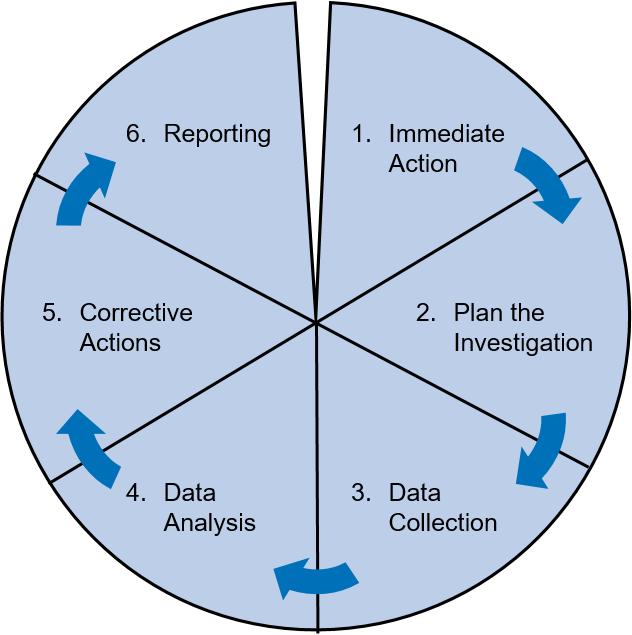Accidents are unexpected events that can have profound impacts on individuals, organizations, and communities. When an accident occurs, understanding the root causes through meticulous investigation is essential for preventing similar incidents in the future. Accident investigation techniques play a crucial role in identifying contributing factors, analyzing data, and implementing corrective actions to enhance safety measures and mitigate risks effectively. In this comprehensive guide, we will delve into the world of accident investigation techniques, exploring various methods, best practices, and the importance of thorough investigations in promoting safety and preventing future accidents.
The Importance of Accident Investigation
Preventing Recurrence
One of the primary goals of accident investigation is to prevent the recurrence of similar incidents. By uncovering the underlying causes of an accident, organizations can address systemic issues, implement corrective measures, and improve safety protocols to reduce the likelihood of future accidents.
Enhancing Safety Protocols
Accident investigations provide valuable insights into safety protocols and procedures, with all findings and updates meticulously managed within safety incident management software. By analyzing the circumstances surrounding an accident, organizations can identify gaps in existing safety measures and make informed decisions to strengthen their protocols, training programs, and risk management strategies.
Legal and Regulatory Compliance
For many industries, conducting thorough accident investigations is not just a best practice but a legal requirement. Regulatory bodies often mandate organizations to investigate accidents, report findings, and take corrective actions to comply with safety regulations and prevent potential liabilities.
Key Steps in Accident Investigation
Secure the Scene
The first step in accident investigation is to secure the scene to prevent further damage or contamination. Establishing a perimeter, preserving evidence, and ensuring the safety of investigators and bystanders are critical considerations during this phase.
Collect Evidence
Gathering evidence is a fundamental aspect of accident investigation. This may include photographs, witness statements, physical evidence, documentation, and data records related to the incident. The quality and thoroughness of evidence collection significantly impact the accuracy of the investigation.
Analyze Data
Data analysis plays a pivotal role in understanding the sequence of events leading to an accident. Investigators use data from various sources, such as surveillance footage, equipment logs, maintenance records, and eyewitness accounts, to reconstruct the incident and identify contributing factors.
Identify Root Causes
Determining the root causes of an accident is essential for developing effective preventive measures. Investigators employ techniques like root cause analysis, fault tree analysis, and 5 Whys to delve deep into the systemic, human, and organizational factors that led to the incident.
Develop Action Plans
Based on the findings of the investigation, organizations develop action plans to address identified deficiencies and mitigate risks. These action plans may involve changes to safety procedures, training programs, equipment maintenance, emergency response protocols, or organizational policies to prevent similar accidents in the future.
Implement Corrective Actions
Implementing corrective actions is a critical step in accident investigation. Organizations must follow through on the recommendations arising from the investigation, allocate resources for preventive measures, monitor progress, and continuously assess the effectiveness of implemented controls.
Best Practices in Accident Investigation
Conduct Investigations Promptly
Timeliness is key in accident investigation. Conducting investigations promptly after an incident ensures that evidence is fresh, memories are vivid, and corrective actions can be implemented swiftly to prevent future accidents.
Involve Multi-disciplinary Teams
Collaboration among experts from various disciplines, including safety professionals, engineers, human factors specialists, and legal advisors, enhances the thoroughness and accuracy of accident investigations. Each perspective contributes valuable insights to the investigation process.
Communicate Findings Effectively
Clear and concise communication of investigation findings is essential for driving change within an organization. Presenting findings to stakeholders, management, and employees in a transparent manner fosters accountability, promotes a safety culture, and encourages proactive risk mitigation efforts.
Navigating Legal Complexities
When motorcycle accidents occur, the path to recovery can be fraught with challenges, from physical injuries to navigating the intricacies of insurance claims and potential legal battles. Herein lies the critical role of a motorcycle injury attorney, a specialized legal advocate who understands the unique aspects of motorcycle accident cases.
These attorneys are not only versed in the laws that govern motorcyclist rights but are also adept at navigating the intricate process of accident investigation from a legal standpoint. They work diligently to uncover the facts, advocate for the victim’s rights, and secure fair compensation for injuries and damages.
Engaging a motorcycle injury attorney early in the post-accident process can be pivotal in ensuring that the investigation is thorough, evidence is meticulously documented, and the victim’s legal interests are robustly represented, particularly in complex cases involving multiple parties, severe injuries, or disputed liability.
Accident investigation techniques are indispensable tools for uncovering the root causes of incidents, improving safety protocols, and preventing future accidents. By following established investigation procedures, analyzing data systematically, identifying root causes accurately, and implementing corrective actions effectively, organizations can enhance safety measures, protect their workforce, and uphold regulatory compliance. Investing in thorough accident investigations not only promotes a culture of safety but also demonstrates a commitment to continuous improvement and risk management. Remember, behind every incident lies an opportunity to learn, grow, and create safer environments for all.
Also read: Alesha Dixon’s Husband: A Closer Look at Their Love Story and Net Worth
